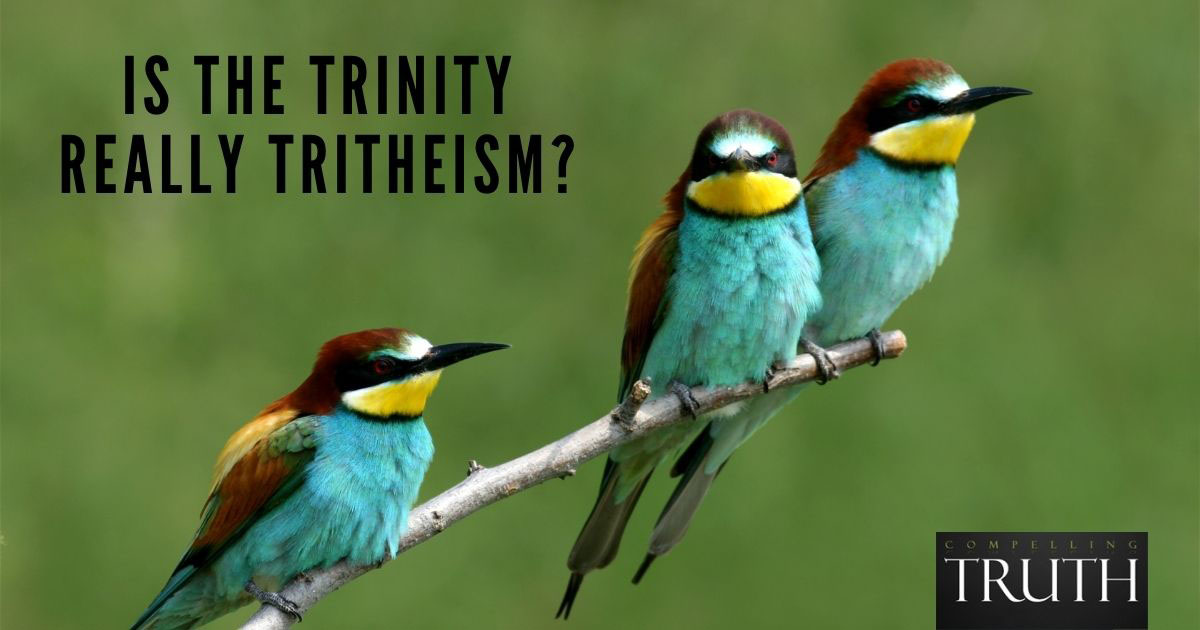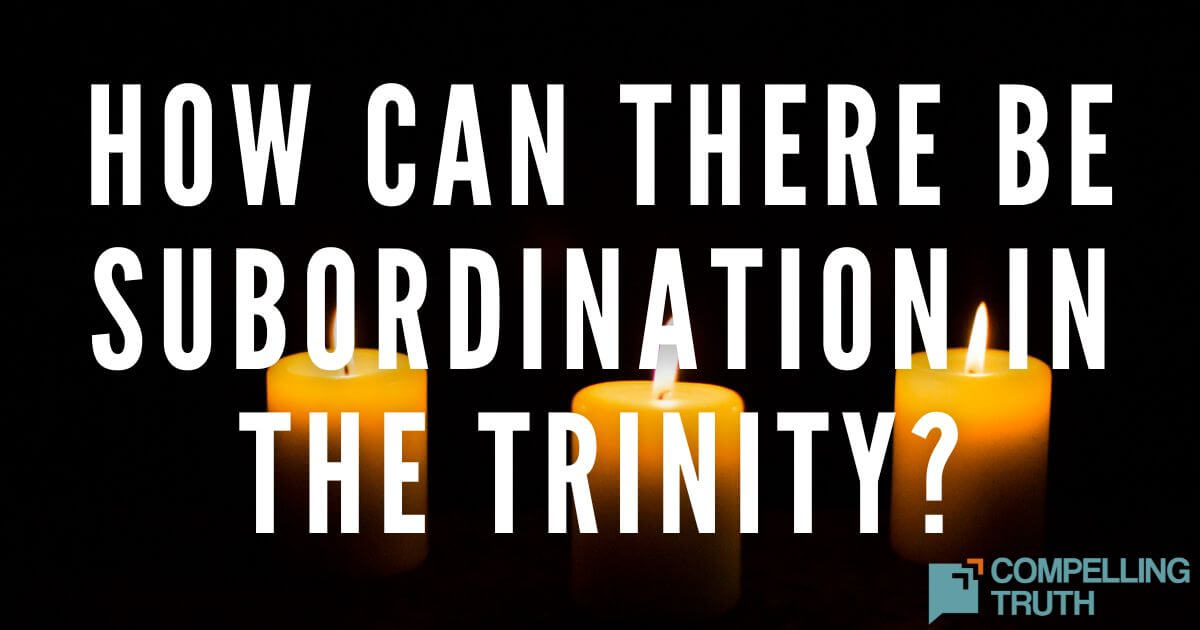When trying to understand God's nature, we often forget that God is a completely different being from us. We tend to put limitations upon God because we cannot fathom the width and depth of His character. When seeking to understand the Trinity, we need to remember that conceptually, we might be able to grasp it, but we won't fully understand the reality of it until we are free from our earthly limitations. We cannot take our earthly understanding and project it upon God, rather we need to take God's heavenly understanding and project it upon the earth. Only then can we begin to grasp the nature of the supernatural.
When we say that the Trinity is God in three Persons, first we need to understand what is meant by the term person. A person is a being who has thoughts, will, and emotion. While we often think of human persons in human bodies, a physical body is not a requirement of personhood. For example, a human retains personhood even after death. Spiritual beings like angels and God have personhood. That is to say, they have intellect, volition, and emotion.
When we say that God is three Persons, we mean that God consists of Father, Son (Jesus Christ), and Holy Spirit. Each of these three have distinct thoughts, wills, and emotions—there are three Persons. Each Person of the Trinity is distinct and yet God functions in perfect unity. There is only one God and He is God in three Persons.
Each person of the Trinity has His own personhood and role. An abbreviated description follows. The Father is the cause of the universe (1 Corinthians 8:6), salvation (John 3:16–17), and revelation (Romans 1:19–20; Hebrews 1:1–2; 2 Peter 1:21; Revelation 1:1). He orchestrates and moves, and the Son and the Holy Spirit act according to His will. Jesus is the Son of God. He played an essential role in creation (John 1:1–3), and His sacrifice became the atonement for our sins (John 3:16). Jesus is the only means of salvation and is the way to the Father (John 14:6; Acts 4:12). Jesus is always before the Father praying for those who have put their faith in Him (Hebrews 7:25; Romans 8:34). The Holy Spirit dwells in us at salvation as our helper on earth, convicting us and drawing us closer to God (John 14:26; 15:26). He also prays on behalf of believers (Romans 8:26–27) and He works to transform us into the image of Christ (Romans 8:29–30; Philippians 2:12–13). He bears witness that we are children of God, giving us assurance of salvation (Romans 8:14–17). The Persons of the Trinity are always communicating with each other and working together to bring about the salvation of people. The Bible says that the Father is God, Jesus is God, and the Holy Spirit is God.
God the Father, God the Son, and God the Holy Spirit, three distinct Persons, are one being (John 10:30; Acts 5:3–4). When God is first introduced in Genesis 1:1, elohim, the plural form of the word for God, is used. The Trinity, each member present and having agency, acted as one God. A few verses later God says, "Let us make man in our image, after our likeness" demonstrating the fact that while God is three Persons, all three Persons act in agreement as one God (Genesis 1:26). The Trinity is distinctly different, yet one being: "Hear, O Israel: The LORD our God, the LORD is one" (Deuteronomy 6:4). The Trinity is in perfect unity and community with each other always.
Below is the best symbol for the Trinity we are aware of (click to expand):

When we say that the Trinity is God in three Persons, first we need to understand what is meant by the term person. A person is a being who has thoughts, will, and emotion. While we often think of human persons in human bodies, a physical body is not a requirement of personhood. For example, a human retains personhood even after death. Spiritual beings like angels and God have personhood. That is to say, they have intellect, volition, and emotion.
When we say that God is three Persons, we mean that God consists of Father, Son (Jesus Christ), and Holy Spirit. Each of these three have distinct thoughts, wills, and emotions—there are three Persons. Each Person of the Trinity is distinct and yet God functions in perfect unity. There is only one God and He is God in three Persons.
Each person of the Trinity has His own personhood and role. An abbreviated description follows. The Father is the cause of the universe (1 Corinthians 8:6), salvation (John 3:16–17), and revelation (Romans 1:19–20; Hebrews 1:1–2; 2 Peter 1:21; Revelation 1:1). He orchestrates and moves, and the Son and the Holy Spirit act according to His will. Jesus is the Son of God. He played an essential role in creation (John 1:1–3), and His sacrifice became the atonement for our sins (John 3:16). Jesus is the only means of salvation and is the way to the Father (John 14:6; Acts 4:12). Jesus is always before the Father praying for those who have put their faith in Him (Hebrews 7:25; Romans 8:34). The Holy Spirit dwells in us at salvation as our helper on earth, convicting us and drawing us closer to God (John 14:26; 15:26). He also prays on behalf of believers (Romans 8:26–27) and He works to transform us into the image of Christ (Romans 8:29–30; Philippians 2:12–13). He bears witness that we are children of God, giving us assurance of salvation (Romans 8:14–17). The Persons of the Trinity are always communicating with each other and working together to bring about the salvation of people. The Bible says that the Father is God, Jesus is God, and the Holy Spirit is God.
God the Father, God the Son, and God the Holy Spirit, three distinct Persons, are one being (John 10:30; Acts 5:3–4). When God is first introduced in Genesis 1:1, elohim, the plural form of the word for God, is used. The Trinity, each member present and having agency, acted as one God. A few verses later God says, "Let us make man in our image, after our likeness" demonstrating the fact that while God is three Persons, all three Persons act in agreement as one God (Genesis 1:26). The Trinity is distinctly different, yet one being: "Hear, O Israel: The LORD our God, the LORD is one" (Deuteronomy 6:4). The Trinity is in perfect unity and community with each other always.
Below is the best symbol for the Trinity we are aware of (click to expand):




